Sevenoak SK-GH01 Handleiding
Bekijk gratis de handleiding van Sevenoak SK-GH01 (2 pagina’s), behorend tot de categorie Statief. Deze gids werd als nuttig beoordeeld door 62 mensen en kreeg gemiddeld 3.7 sterren uit 31.5 reviews. Heb je een vraag over Sevenoak SK-GH01 of wil je andere gebruikers van dit product iets vragen? Stel een vraag
Pagina 1/2

There is a small hole on the side of the
base of the Head that can be used to
apply greater leverage for installing or
removing the Head from your tripod.
The hole is designed to accommodate
a 5/32 hex key (commonly used by our
customers to attach quick-release plates
to lenses & cameras). Note: The hex key
is only used as a leverage arm, it does not engage a fastener
inside the leverage hole (the hole is not threaded). If you do
not have an appropriate sized hex key, any strong metal rod
that will fit into the hole can be used (e.g. a small screwdriver).
Prerequisite: In order to attach your lens to the Sevenoak
Gimbal Head, it must be fitted with an Arca-Swiss style quick
-release plate or foot (see details below).
In order to attach your lens to the Sevenoak Gimbal Head, it must
be fitted with an Arca-Swiss style quick-releaseplate or foot (sold
separately). We oer a line of such plates. For more information
see our catalog or website: www.sevenoak.biz(click on “Lens
Plates”).
We strongly recommend using Sevenoak plates because we
carefully match your lens with the appropriate size plate that
Position the Head’s platform at its
lowest position and level to the
ground. Tighten the Head’s tilt knob.
Mount your lens (with camera body
attached). Stand behind the
lens/camera setup and grab the
camera body as if you are going
to take a picture.
Step 1: Tighten the tilt knob of the
swing arm-make sure that the Head’s
platform is level so that the Head is
stable while you are loading your lens.
Step 2: Open the jaws of the quick-
release clamp wide enough so that the
jaws clear the entire width of the QR
plate attached to the foot of your lens.
Step 3: While supporting your lens,insert
the quick-release plate on your lens into
the jaws of the clamp and tighten the
clamp securely.Make sure the quick-release
plate is seated properly and captive in the
clamp jaws before letting go of the lens.
Using the Leverage Hole:
Attching Your Lens To The Sevenoak Gimbal Head:
Prerequisite: Arca-Swiss Style Lens Plate :
Balancing Your Lens On The Sevenoak Gimbal Head:
STEP 1: Preparing to Balance:
Loosen the tilt knob of the Sevenoak Gimbal Head SLOWLY-stand
ready to catch the lens or camera body should one end or the
other rapidly tilt down! Adjust the horizontal position of the lens
forward or backwards depending on how the lens tips (see fig-
ures below). SAFETY NOTE: Retighten the clamp after each
adjustment, no matter how small! Use the two safety stop screws
provided with your Wimberley lens plate or replacement foot to
prevent the lens/camera combo from sliding out of the clamp
when loosened.
If the front of the lens tilts downward
you will need to sild the lens backward
in the clamp toward you.
If the front of the lens tilts upward,
you willneed to slide lens forward
away from you.
STEP 2: Balance the Horizontal Position of the Lens:
Use caution when adjusting
the center screw (see page 7).
Dimensions: (h,w,d): 23.5*8.9*24.7cm
Weight: 1.4 kg
It is important to read these instructions.
Setting up this Head is not dicult, but reading these instructions
will allow you to get the most out of the product.
Instructions: Sevenoak Gimbal Head SK-GH01
Mounting SK-GH01to a tripod:
Setting up the Sevenoak Gimbal Head
Assembling the Sevenoak Gimbal Head is a simple matter
of attaching the Head’s platform (detached to make it
more compact for shipping) to the swinging arm of the
Head. Do not tighten the platform knob unless it is mounted
on the Head.
Step 1: Align the platform jaws
properly with the dovetail grooves
in the swing arm. Slide the platform
onto the swing arm of the Head.
Slide the platform all the way
down until it hits the “stop” at the
bottom.
Step 2: Tighten the platform knob
firmly. (The platform should lock
securely to the arm without the
need to apply extreme torque).
The platform height will be adjusted
later if needed.
Step 1: Firmly tighten the lower (pan) knob.
Step 2: Position the Head with
the spool mounting hole (located
under the spool) directly over the
threaded tripod mounting stud.
It is important to keep the Head
completely straight (vertical) over
the stud to keep the spool threads
from cross - threading.
Step 3: Screw the Head clockwise
onto the stud of your tripod until
it seats the bottom spool of the
Head and the tripod mounting
plate. Use the leverage hole to
achieve a tighter attachment if
desired (see below).Loosen the
pan knob slightly and rotate the
Head to check the security of
the mount. The spool should not
loosen when you turn the Head
counterclockwise, and the Head
should not wobble at all.
Assembling The Sevenoak Gimbal Head:
IMPORTANT WARNINGS!
Tit Knob
Upright
Arm
Platform Knob
Platform
Pan Knob
Quick-Release Knob
Never loosen or remove the 3 small
screws on the top of the pan base.
If your tripod has a smaller ¼” mounting stud , check to see
if it is a reversible stud with a 3/8”-16 threaded section on the
other end. If so, reverse the stud and use the 3/8” end of the
stud. If the ¼” stud is not reversible, you will need to use a
reducer bushing to mount the Head to the tripod. Robust
brass bushings can be ordered through our website.
1
1
1
3
2
2
3
SK-GH01
Gimbal Head
2
will allow you to properly balance your lens on our gimbal head.
Our plates are also all equipped with safety stops which protect
your gear from accidentally slipping out of a compatible quick-
release clamp.If you use plates from other manufacturers you
will need to make sure that they are the proper length and pro-
portion that we recommend for your lens.Compare the plate
length and profile to the recommended plate for your lens in our
product catalog or on our web site.
Page 1 Page 2 Page 3 Page 4
2017 Sevenoak Inc.Visit us on the web at www.sevenoak.biz

loosen and tighten the mechanisms for fluid motion or static
shots. You should avoid unscrewing any of the knobs all the
way, and there should be no need to over-tighten them.
Adjust the position of the lens in small increments until it remains
level when the Head’s tilt knob is loose.
Note: because there is some damping friction in the tilt mechan-
ism, the lens may stay level even when it is slightly unbalanced.
This is okay, but if you wish to fine tune the balance even further,
gently tilt the lens up 20 degrees from level and then down 20
degrees from level. If it’s easier to tilt the lens up, slide the lens
slightly forward. If it’s easier to tilt the lens down, slide the lens
backward. Adjust in this manner until the resistance is symmetric.
Proper Horizontal Balance:
1. Carry a small ball head, attach a quick-release plate to
the bottom of it, and attach the ball head directly to the
clamp on the Wimberley Head. This eliminates the need to
adjust the legs of the tripod to level the horizon or to remove
the Wimberley Head, but it can be inconvenient to have to
carry an extra head with you.
2.Use a small beanbag with the Head; you can set the
beanbag on the top of the Head itself, or on top of your big
lens while it is still attached to the Head.
Other alternatives for attaching the camera body to
the Sevenoak Gimbal Head:
Once you have properly adjusted the forward-backward position
of the lens, you may need to adjust the vertical position of the
lens (especially telephoto lenses smaller than a 600 f/4 or 400
f/2.8).
Loosen the platform wing knob and adjust the vertical position
of the platform so that the center of the lens is slightly above
the tilt axis of the Head (see figure to the right).
Loosen the tilt knob and tilt the front of the lens about 30 degr-
ees toward the sky. When you let go of the lens, if it wants to
keep going up in the direction that you’ve tilted it, you need to
lower the position of the lens by adjusting the position of the
platform. If the lens wants to return to a level position, you need
to raise the position of the lens.
The goal is to perfectly balance the lens so that it stays pointed in
any position even when the Head is completely loose. Fine tune
the vertical and forward-backward position of the lens until you’
ve achieved perfect balance. Once you have done this a few times,
it gets much easier to do and will take very little time to achieve as
you get more practiced.
TIP: Once you are able to let go of the camera/lens combo in any
position with the tilt and pan knobs loose and it stays in a balanced
position without moving at all, you may want to mark the exact
position of your lens plate within the clamp, and your platform
position on the tilt arm, with a pencil, permanent ink marker or tape
for faster set up in the field.
The Head is now ready to use. Simply loosen the pan and tilt knobs
about a quarter turn and start shooting. If you have done everyt-
hing properly, the lens should be very easy to point, should stay
pointed and should not tend to flop or creep. As you become more
familiar with the Head you will probably be better able to make fine
adjustments in the balance of your setup. You can shoot with the
knobs loose, or lock - in on a target by tightening the knobs. You
should not need to loosen the knobs more than a few turns to
unlock the Head. Conversely, there should be no need to over
-tighten the knobs. If things don’t feel right, please contact us.
Knob screws are captive and should not loosen or come o on
their own.
The tilt and pan knobs should tighten with enough friction to keep
the Head from moving on its own. The pan base and swing arm
should not move easily when the knobs are fully tightened.If sig-
nificant force is applied, the Head will slip slightly on the spool
when the panning knob is tightened all the way. THIS IS NORMAL
AND DOES NOT AFFECT PRODUCT PERFORMANCE. When using
the Head, you can put a small amount of friction on both the pan
and tilt to hold the position of your lens and rotate it with a bit of
force as needed. This is not going to going to damage your Head.
Only a single turn or two of the pan and tilt knobs should allow you
to
STEP 3: Balance the Vertical Position of the Lens:
MAINTENANCE & TROUBLESHOOTING:
A 7/32 hex key fits the 3/8”-16 center
screw on the top of the pan base of
your Sevenoak Gimbal Tripod Head
(see figure at right). This screw applies
pre-tension to the pan base (so there
is no slop in the mechanism),and adjusts
the minimum drag for the pan base.
You should not have to use this adjustment
on a regular basis. The minimum drag is the amount of
resistance in the pan mechanism when the Head is
un-tightened. We have set the minimum drag for your Head
to a level that we feel is optimal for field use. You should not
need to adjust the screw unless you experience an undesirable
change in the Head’s minimum drag as the Head wears in.
CAUTION: Only a very small adjustment should be necessary;
do not remove the screw or back it out excessively. Doing
so could compromise the screw’s ability to lock in place and
the performance of your Head.
Fine Tension Adjustment of Your Pan Base :
Firmly tighten the pan knob, then turn the Head counterclo
ckwise. It should loosen easily from the platform during the
first rotation.If the Head has been on the tripod for a while,
more force may be necessary to remove it. If the Head is
stuck, try using the lever age hole for removal (see details at
Removing the Head from your tripod :
the bottom of page 3). The pan base screws do not tighten
the Head to, or loosen it from, the tripod mount.
In extreme situations where it is not feasible to send the head
in for repair, and you wish to attempt to fix a problem yourself,
you do so at your own risk; however, these guidelines will help
improve your odds of success and help you to avoid making the
situation worse. Note: Any field repair should be followed up
with a proper repair from us as soon as possible.
Emergency Repairs:
Few things are likely to go wrong with the SK-GH01, and there
should be almost no need for routine maintenance of internal
parts. However, if the Head is in need of repair, we ask that you
return the Head to us for inspection and service. (International
customers should contact the dealer who sold you the Head).
If the Head is faulty, we will fix it free of cost. If the problem
arises from extreme use, abuse or accident, we will repair the
Head for a reasonable fee.
We strongly discourage you from disassembling this unit without
direct instruction from us. Any damage to the head resulting
from disassembly will not be covered by warranty. In special
cases where an emergency repair is required, please refer to
the guidelines to the right.
IF You Have a Problem With Your Head:
Level Plane
Center of lens
Tilt Axis
Vertical
Adjustment
Platform Knob
Tilt Mechanism:
To disassemble the
tilt mechanism, remove the captivating
screw and unscrew the Tilt Knob. If
you need to remove the grease in
the mechanism, it is okay to use the
tilt mechanism without grease until
you have the opportunity to send it in for us to refurbish.
Pan Mechanism.Remove ONLY the
large central fastener on top of the
Pan base to disassemble the pan
base. DO NOT loosen or remove
the three smaller screws, and do
not attempt to remove the Pan Knob. If you clean the
components of the pan mechanism, you MUST apply oil to all
mating surfaces before reassembling, failure to do so could
cause the mechanism to gall and freeze-up permanently.
2017 Sevenoak Inc.Visit us on the web at www.sevenoak.biz
Page 5 Page 6 Page 7 Page 8
Product specificaties
| Merk: | Sevenoak |
| Categorie: | Statief |
| Model: | SK-GH01 |
| Kleur van het product: | Zwart |
| Gewicht: | 1400 g |
| Hoogte: | 235 mm |
| Maximale gewichtscapaciteit: | - kg |
| Ingebouwd spirit niveau: | Nee |
| Bijlage: | 3/8 " |
| Tripod head type: | Kompasbeugel |
Heb je hulp nodig?
Als je hulp nodig hebt met Sevenoak SK-GH01 stel dan hieronder een vraag en andere gebruikers zullen je antwoorden
Handleiding Statief Sevenoak

14 Mei 2023

7 Mei 2023

4 Mei 2023

20 Maart 2023

12 Februari 2023

25 Januari 2023
Handleiding Statief
- Kern
- Dorr
- LyteQuest
- Geekoto
- Acratech
- Swarovski
- Royer Labs
- Redrock Micro
- LanParte
- Rode
- SCG
- Benro
- GoPro
- Pyle
- Kodak
Nieuwste handleidingen voor Statief
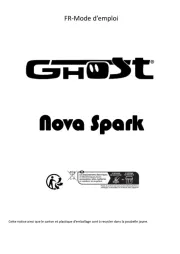
15 September 2025
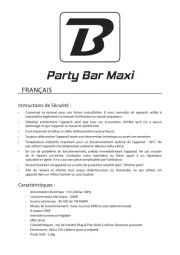
8 September 2025
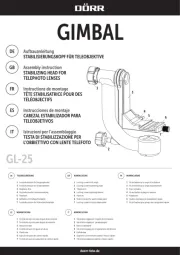
1 September 2025
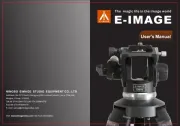
28 Augustus 2025
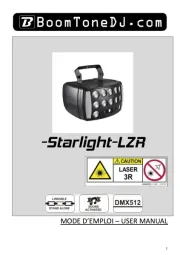
26 Augustus 2025
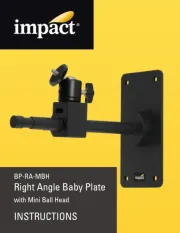
13 Augustus 2025
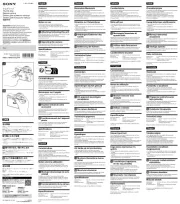
5 Augustus 2025
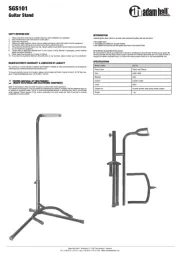
5 Augustus 2025
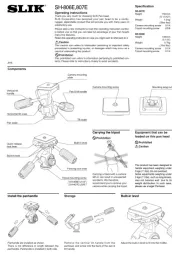
31 Juli 2025
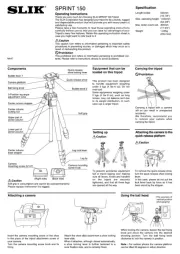
31 Juli 2025